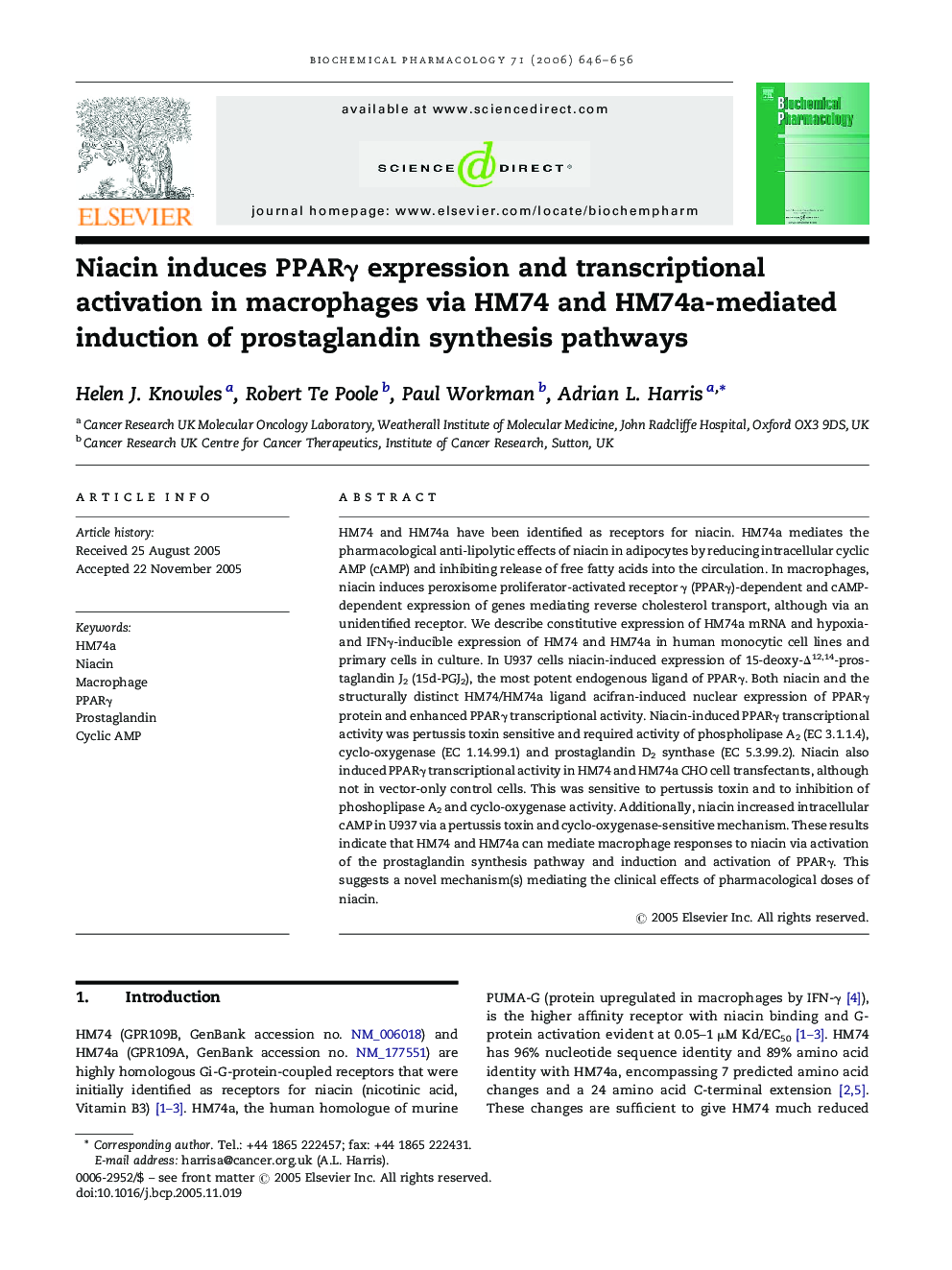| Article ID | Journal | Published Year | Pages | File Type |
|---|---|---|---|---|
| 2515343 | Biochemical Pharmacology | 2006 | 11 Pages |
HM74 and HM74a have been identified as receptors for niacin. HM74a mediates the pharmacological anti-lipolytic effects of niacin in adipocytes by reducing intracellular cyclic AMP (cAMP) and inhibiting release of free fatty acids into the circulation. In macrophages, niacin induces peroxisome proliferator-activated receptor γ (PPARγ)-dependent and cAMP-dependent expression of genes mediating reverse cholesterol transport, although via an unidentified receptor. We describe constitutive expression of HM74a mRNA and hypoxia- and IFNγ-inducible expression of HM74 and HM74a in human monocytic cell lines and primary cells in culture. In U937 cells niacin-induced expression of 15-deoxy-Δ12,14-prostaglandin J2 (15d-PGJ2), the most potent endogenous ligand of PPARγ. Both niacin and the structurally distinct HM74/HM74a ligand acifran-induced nuclear expression of PPARγ protein and enhanced PPARγ transcriptional activity. Niacin-induced PPARγ transcriptional activity was pertussis toxin sensitive and required activity of phospholipase A2 (EC 3.1.1.4), cyclo-oxygenase (EC 1.14.99.1) and prostaglandin D2 synthase (EC 5.3.99.2). Niacin also induced PPARγ transcriptional activity in HM74 and HM74a CHO cell transfectants, although not in vector-only control cells. This was sensitive to pertussis toxin and to inhibition of phoshoplipase A2 and cyclo-oxygenase activity. Additionally, niacin increased intracellular cAMP in U937 via a pertussis toxin and cyclo-oxygenase-sensitive mechanism. These results indicate that HM74 and HM74a can mediate macrophage responses to niacin via activation of the prostaglandin synthesis pathway and induction and activation of PPARγ. This suggests a novel mechanism(s) mediating the clinical effects of pharmacological doses of niacin.
